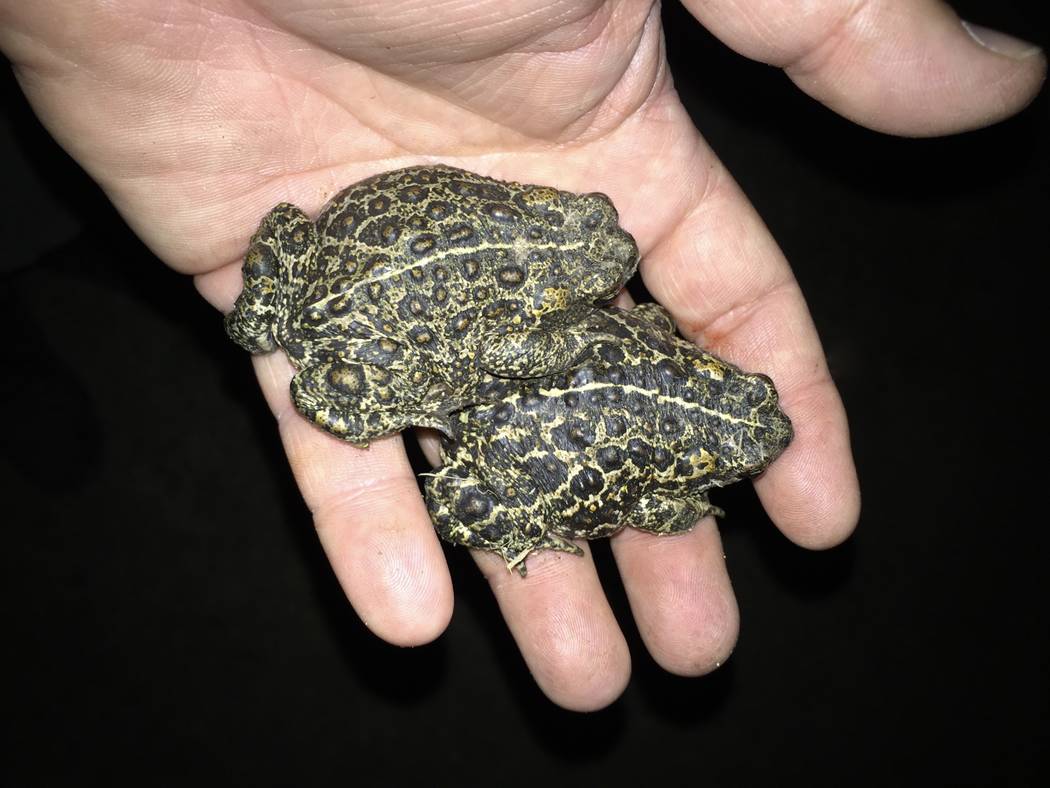New Nevada toad species may qualify for endangered status



A recently discovered toad in Northern Nevada may qualify for endangered species protection, federal regulators announced Tuesday.
After a 90-day review of the Dixie Valley toad, the U.S. Fish and Wildlife Service has decided the rare amphibian warrants a more comprehensive 12-month study to determine if it should become Nevada’s newest listed species.
The Center for Biological Diversity petitioned for protection of the toad in September, citing threats posed by a proposed geothermal energy project at the edge of its isolated habitat.
“The Dixie Valley toad is one of the most vulnerable species in Nevada,” said Jenny Loda, a biologist and lawyer ,who works to protect amphibians and reptiles for the Tucson, Arizona-based conservation group.
The 2-inch frogs with bumpy green, black and brown skin are only known to live in one spring-fed marsh covering just over 2 square miles of federal land in the remote Dixie Valley, about 400 miles northwest of Las Vegas.
The new species was discovered by University of Nevada, Reno, researcher Michelle Gordon, former UNR researcher Eric Simandle and UNR Professor C. Richard Tracy, a renowned biologist who has a species of lizard named after him in Argentina.
The unique toad first caught the eye of scientists in the early 2000s. A follow-up study launched by the UNR researchers in 2014 confirmed its status as genetically distinct.
It is the first new species of toad found anywhere in the U.S. in 50 years.
The Bureau of Land Management is currently reviewing a plan by Reno-based Ormat Technologies to build up to two 30-megawatt geothermal power plants directly adjacent to the toad’s habitat.
The project also would include as many as 15 production and injection wells, a network of pipelines and access roads and a transmission line stretching 48 miles to Ormat’s existing, 22-megawatt Jersey Valley Geothermal Power Plant, which supplies power to NV Energy.
Loda expects the ongoing environmental review of the geothermal project to continue despite Tuesday’s announcement by the Fish and Wildlife Service.
“It doesn’t really put anything on hold,” she said. “Hopefully this will just help them see the importance of the toad.”
The species is also under threat from invasive species, disease, climate change, groundwater extraction and livestock grazing, according to conservationists.
The Fish and Wildlife Service’s 12-month review will either result in a listing proposal for the toad or the denial of the center’s petition.
In other action announced Tuesday, the service agreed to conduct an expanded review of a petition to list the Oregon vesper sparrow as threatened or endangered and a separate petition to remove the western population of yellow-billed cuckoos from the endangered species list.
The sparrow is primarily found in Washington, Oregon and California. The breeding range of the western yellow-billed cuckoo generally includes the area west of the Rocky Mountains from British Columbia to Mexico, but sightings of the bird in Nevada are rare.
Livestock and mining groups, mostly in Arizona, are pushing for the cuckoo to be “delisted.”
The Center for Biological Diversity, which submitted the original 1998 petition that led to the bird’s protection in 2014, said the species’ critical habitat remains unprotected.
Contact Henry Brean at hbrean@reviewjournal.com or 702-383-0350. Follow @RefriedBrean on Twitter.













